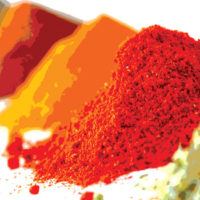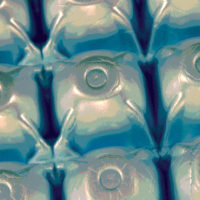How U.S. FDA’s GRAS Notification Program Works

The U.S. Food and Drug Administration (FDA) regulates approximately 80% of the U.S. food supply and is involved with many facets of food safety. Within FDA, the Center for Food Safety and Applied Nutrition’s (CFSAN) Office of Food Additive Safety is responsible for reviewing safety information for food ingredients and food packaging. This article provides an overview of a particular type of food ingredient regulatory classification: “generally recognized as safe,” commonly referred to as GRAS. It describes the history of the GRAS program, how the Office of Food Additive Safety administers the program, and includes statistics about the program.
In 1958, Congress enacted the Food Additives Amendment to the Federal Food, Drug, and Cosmetic Act (FD&C Act). The amendment and/or supporting legislative documents defined the term “food additive”; required premarket approval for new uses of food additives; and established the standard of review (“fair evaluation of the data…”), the standard of safety, and formal rulemaking procedures for food additives. Congress broadly defined “food additive” to include any substance the intended use of which results or may reasonably be expected to result, directly or indirectly, in its becoming a component or otherwise affecting the component of food. Congress further stated that “substances that are generally recognized, among experts qualified by scientific training and experience to evaluate their safety as having been adequately shown . . . to be safe under the conditions of their intended use,” are excluded from the definition. Put simply, substances that are GRAS under conditions of their intended use are not food additives and do not require premarket approval by FDA.
GRAS Determination vs. Food Additive Safety Determination. Irrespective of whether a substance is deemed to be GRAS or if its safety is established through a premarket approval process, the safety determination is always limited to the substance’s intended conditions of use.[1] The difference between a GRAS determination and a premarket approval relates to who has access to the scientific data and information and who has reviewed the scientific data and information.
For a substance to be GRAS, the scientific data and information about the use of a substance must be widely known and there must be a consensus among qualified experts that those data and information establish that the substance is safe under the conditions of its intended use. GRAS determinations made in this manner are said to be made through scientific procedures. For a food additive, privately held data and information about the use of a substance are sent by the sponsor to FDA, which evaluates those data and information to determine whether they establish that the substance is safe under the conditions of its intended use (21 CFR 171.1). Thus, for a food additive, FDA determines the safety of the ingredient; whereas a determination that an ingredient is GRAS can be made by qualified experts outside of government.
There is, however, an additional way that a GRAS determination can be made. For a substance used in food before 1958, a GRAS determination can be made through experience based on common use in food. It should be noted that determinations based on common use in food require a substantial history of consumption in food by a significant number of consumers (21 CFR 170.30(c) and 170.3(f)), and that this basis for GRAS determination is seldom relied on today.
GRAS Affirmation
During the late 1960s new scientific information raised questions about the safety of cyclamate salts, substances previously considered GRAS. As a result, then-President Nixon directed FDA to re-examine the safety of substances considered to be GRAS. In response to this directive, FDA announced that the agency would evaluate, by contemporary standards of the time, the available safety information related to substances FDA considered GRAS. If the evaluation confirmed that the use of a particular substance was GRAS, FDA would issue a new GRAS regulation, affirming that finding. As part of the GRAS affirmation process, FDA also established procedures whereby individuals could petition FDA to review the GRAS status of substances not covered as part of the GRAS review that the agency undertook upon passage of the Food Additives Amendment in 1958.
By 1997 FDA had tentatively concluded that it could no longer devote substantial resources to the GRAS affirmation petition process. The agency published a proposed rule outlining a GRAS notification process to replace the resource-intensive GRAS affirmation petition process.[2] As part of the proposed rule the agency announced an interim policy, under which it would accept and in general administer GRAS notices as described in the proposed rule, until a final rule published. Under the interim policy, FDA indicated it would make a good faith effort to follow the timelines called for in the proposed rule; however, the agency would not be bound by them. In 1998 FDA received its first GRAS notice for a food ingredient.
The GRAS Notification Program
 The GRAS notification program provides a voluntary mechanism whereby a person may inform FDA of a determination that the use of a substance is GRAS, rather than petition FDA to affirm that the use of a substance is GRAS. Although operating under an interim procedure, pending the publication of a final rule, FDA has received and responded to nearly 200 GRAS notices for a variety of substances including carbohydrates, lipids, proteins, and chemicals such as gases, inorganics, organics (Figures 1 and 2).
The GRAS notification program provides a voluntary mechanism whereby a person may inform FDA of a determination that the use of a substance is GRAS, rather than petition FDA to affirm that the use of a substance is GRAS. Although operating under an interim procedure, pending the publication of a final rule, FDA has received and responded to nearly 200 GRAS notices for a variety of substances including carbohydrates, lipids, proteins, and chemicals such as gases, inorganics, organics (Figures 1 and 2).

Submitting a GRAS Notification. FDA encourages individuals to thoroughly review its GRAS notification submission procedures prior to sending a notification to the Agency.[3] Additionally, a notifier may request a pre-submission meeting with FDA to discuss issues that may be relevant to the submission of the notifier’s GRAS notice.
Notifications should be sent to FDA’s Office of Food Additive Safety and among many things include: a “GRAS exemption claim” providing a succinct description of the substance, the applicable conditions of use, and the basis for the GRAS determination (scientific procedures or common use in food). The notice should also include information about the identity and properties of the substance and a discussion of the notifier’s reasons for concluding that the substance is GRAS for its intended use. The information about the notified substance generally is chemical, toxicological, and, if applicable, microbiological in nature. The notifier should discuss information supporting the GRAS determination, as well as any information that would appear to be inconsistent with a GRAS determination, and explain why, in light of the totality of the information, the notifier concludes the substance is GRAS under the intended conditions of use.
FDA Response. Within 30 days of receiving a notice FDA will inform the notifier in writing of the date on which the notice was received. FDA then evaluates whether the submitted notice provides a sufficient basis for a GRAS determination and whether information in the notice, or otherwise available to FDA, raises issues that lead the agency to question whether use of the substance is GRAS. On occasion, FDA will consult with other agencies; for example, when the notice includes use in meat and poultry products, FDA consults with the Food Safety and Inspection Service of the U.S. Department of Agriculture.
Following this evaluation FDA responds to the notifier with one of three types of letters. The first type of letter states that FDA does not question the basis for the notifier’s GRAS determination. This type of letter may also note, among other things, potentially pertinent issues related to labeling, the substance’s use in certain foods, and requirements for a color additive.[4] In the second type of letter, the agency concludes that the notice does not provide a sufficient basis for a GRAS determination (e.g., because the notice does not include appropriate data and information, or because the available data and information raise questions about the safety of the notified substance). The third type of letter states that the agency has, at the notifier’s request, ceased to evaluate the GRAS notice.
As part of the 1997 GRAS proposal, FDA also announced its intention to maintain an inventory of GRAS notices and the agency’s response to those notices. In accordance with this, the Office of Food Additive Safety has created and maintains a web page titled “Summary of All GRAS Notices.”[5] The page lists all GRAS notices that FDA has received, describes FDA’s responses, and provides hyperlinks to FDA’s response letters and additional correspondence. The page is organized by year, and within the summary table for each year, there is a link to a table that provides more details about the GRAS notices received in that year, including: the name of the person who made the GRAS determination (notifier); the substance that is the subject the notice; a description of the intended use of the substance; the basis for the GRAS determination; and FDA’s response to the notice.
FDA encourages individuals contemplating filing a GRAS notice or who are just interested in knowing more about GRAS substances to review CFSAN’s GRAS Notification Program web page at www.fda.gov/Food/FoodIngredientsPackaging/GenerallyRecognizedasSafeGRAS/GRASNotificationProgram/default.htm and the “Frequently Asked Questions About GRAS” document on that page. Information on other programs under the purview of CFSAN’s Office of Food Additive Safety can be found at www.fda.gov/AboutFDA/CentersOffices/OrganizationCharts/ucm183726.htm.
Paulette Gaynor, Ph.D. is a consumer safety officer in CFSAN’s Office of Food Additive Safety’s Division of Biotechnology and GRAS Notice Review. She has worked for FDA for nine years and currently serves as a contact for the GRAS notification program.
Series editor Sebastian Cianci is a policy analyst and a member of CFSAN’s Office of Food Safety, Defense, and Outreach. He has worked for FDA for 15 years and serves as the Center’s trade press liaison.
Endnotes
1. FDA has defined “safe” as “a reasonable certainty in the minds of competent scientists that the substance is not harmful under the intended conditions of use” (21 CFR 170.3(i).
2. 62 FR 18938, April 17, 1997. Substances Generally Recognized as Safe. www.fda.gov/Food/FoodIngredientsPackaging/GenerallyRecognizedasSafeGRAS/default.htm.
3. How to Submit a GRAS Notice. www.fda.gov/Food/FoodIngredientsPackaging/GenerallyRecognizedasSafeGRAS/ucm083062.htm.
4. Under section 201(s) of the FD&C Act, the GRAS substances are excluded from the definition of a food additive. There is no corresponding exclusion in the definition of a color additive (section 201(t) of the FD&C Act). Given this difference, the use of a substance that is capable of imparting color may constitute use as both a color additive and as a food additive or GRAS substance.
5. Summary of All GRAS Notices. www.fda.gov/Food/FoodIngredientsPackaging/GenerallyRecognizedasSafeGRAS/GRASListings/default.htm.
Looking for a reprint of this article?
From high-res PDFs to custom plaques, order your copy today!







